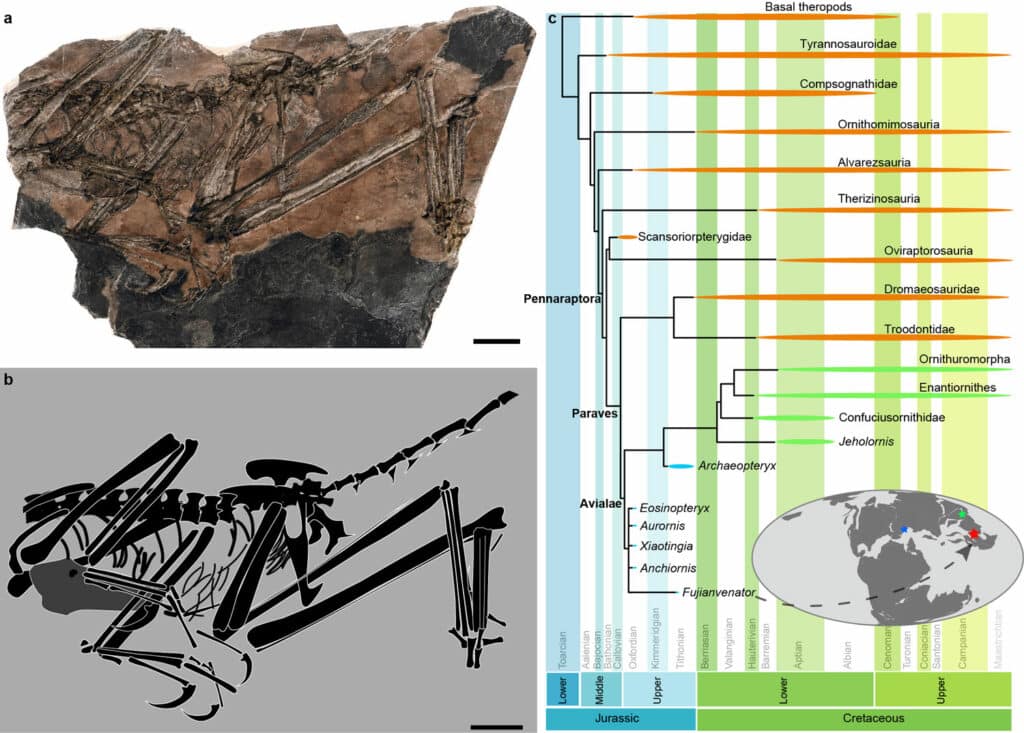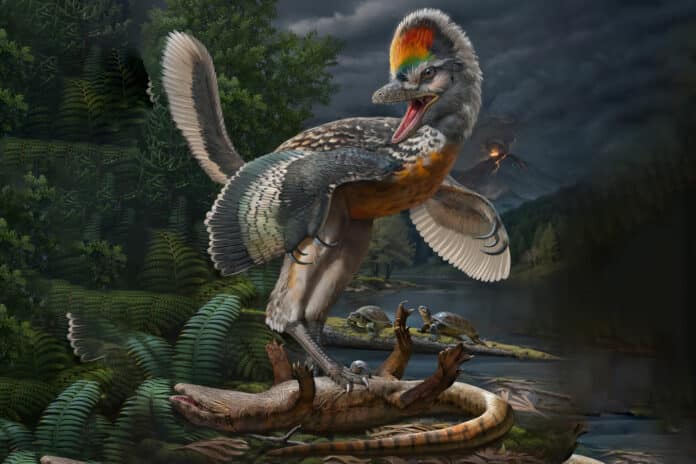Although non-avialan theropod dinosaurs from the Late Jurassic period are the ancestors of birds, the earliest stage of this evolutionary process is still unknown because of the extremely scant and spatio-temporally constrained fossil record. Understanding the evolution of the distinctive avian bauplan and resolving phylogenetic disputes over the origin of birds depend on knowledge of the early-diverging species along the avialan line.
A combined study team from the Fujian Institute of Geological Survey (FIGS) and the Institute of Vertebrate Paleontology and Paleoanthropology of the Chinese Academy of Sciences in Beijing characterized and examined a new avialan theropod that was discovered in Zhenghe County, Fujian Province, 150 million years ago.
The newly discovered species, Fujianvenator prodigiosus, has an odd collection of morphologies shared with other avian, troodontid, and dromaeosaurian taxa. It demonstrates the influence of evolutionary mosaicism on the evolution of early birds.
Dr. WANG Min from IVPP, lead and corresponding author of the study, said, “Our comparative analyses show that marked changes in body plan occurred along the early avialan line, which is largely driven by the forelimb, eventually giving rise to the typical bird limb proportion.”
“However, Fujianvenator is an odd species that diverged from this main trajectory and evolved bizarre hindlimb architecture.”
Together with other geological findings, the remarkably long lower leg and other morphologies of Fujianvenator point to a hitherto unrecognized ecology for early avialans, one in which the creature was either a fast runner or a long-legged wader.

XU Liming from FIGS, lead author of the study, said, “Besides Fujianvenator, we have found abundant other vertebrates, including teleosts, testudines, and choristoderes.”
Due to the paleo-Pacific plate’s subduction during the Late Jurassic and Early Cretaceous, southeast China saw intense tectonic activity. This led to widespread magmatism and concurrent fault-depression basins, where the Fujianvenator was discovered. This geological setting is roughly the same as north and northeastern China during the Late Jurassic, where the older Yanliao Biota is still present.
Dr. ZHOU Zhonghe from IVPP, co-author of the study, said, “The extraordinary diversity, unique vertebrate composition, and paleoenvironment strongly indicate that this locality documents a terrestrial fauna, which we named the Zhenghe Fauna. In-situ radioisotopic dating and stratigraphic surveys constrain the Zhenghe Fauna to the 150–148 Ma period. Therefore, Fujianvenator documents one of the Jurassic avialans’ stratigraphically youngest and geographically southernmost members.”
The finding of the Zhenghe Fauna provides a fresh look at the planet’s Late Jurassic terrestrial ecology, and the collaborative research team from IVPP and FIGS intends to keep exploring Zhenghe and the surrounding region.
Journal Reference:
- Xu, L., Wang, M., Chen, R., et al. A new avialan theropod from an emerging Jurassic terrestrial fauna. Nature (2023). DOI: 10.1038/s41586-023-06513-7
